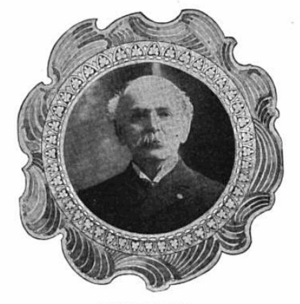Harrison Clark facts for kids
Quick facts for kids
Harrison Clark
|
|
|---|---|
 |
|
| Born | April 10, 1842 Chatham, New York |
| Died | April 18, 1913 (aged 71) Albany, New York |
| Buried |
Albany Rural Cemetery
|
| Allegiance | |
| Service/ |
|
| Years of service | August 27, 1862 to September 4, 1865 |
| Rank | Corporal |
| Unit | |
| Awards | |
Corporal Harrison Clark (April 10, 1842 – April 18, 1913) was an American soldier. He fought bravely during the American Civil War. Clark received the country's highest award for courage, the Medal of Honor. He earned this award for his actions at the Battle of Gettysburg in Pennsylvania. This happened on July 2, 1863. He was officially given the Medal of Honor on June 11, 1895.
Contents
Life and Military Service
Harrison Clark was born in Chatham, New York, on April 10, 1842. Before the Civil War began, he worked as a carriage maker. This means he built or repaired horse-drawn carriages.
Joining the War
Clark decided to join the army during the Civil War. He became a soldier in the 125th New York Infantry regiment. His service began on August 27, 1862.
Bravery at Gettysburg
On July 2, 1863, Clark showed incredible bravery. This was during the very important Battle of Gettysburg. His actions during this battle earned him the Medal of Honor. After this brave act, he was promoted to color sergeant. A color sergeant was responsible for carrying the regiment's flag.
Later Battles and Promotions
Clark also fought in the Battle of the Wilderness in May 1864. During this battle, he was shot in the leg. Even with his injury, he kept fighting. Because of his continued courage, he was promoted again. He became a 2nd Lieutenant right there on the battlefield.
After the War
Harrison Clark finished his military service on September 4, 1865. This was at the end of the Civil War. After the war, he married Harriet Emeline Johnson. They had three children together.
Clark later owned an opera house. He also worked as the Keeper of the Bureau of Military Services. He passed away on April 18, 1913. His burial place is the Albany Rural Cemetery in New York.

